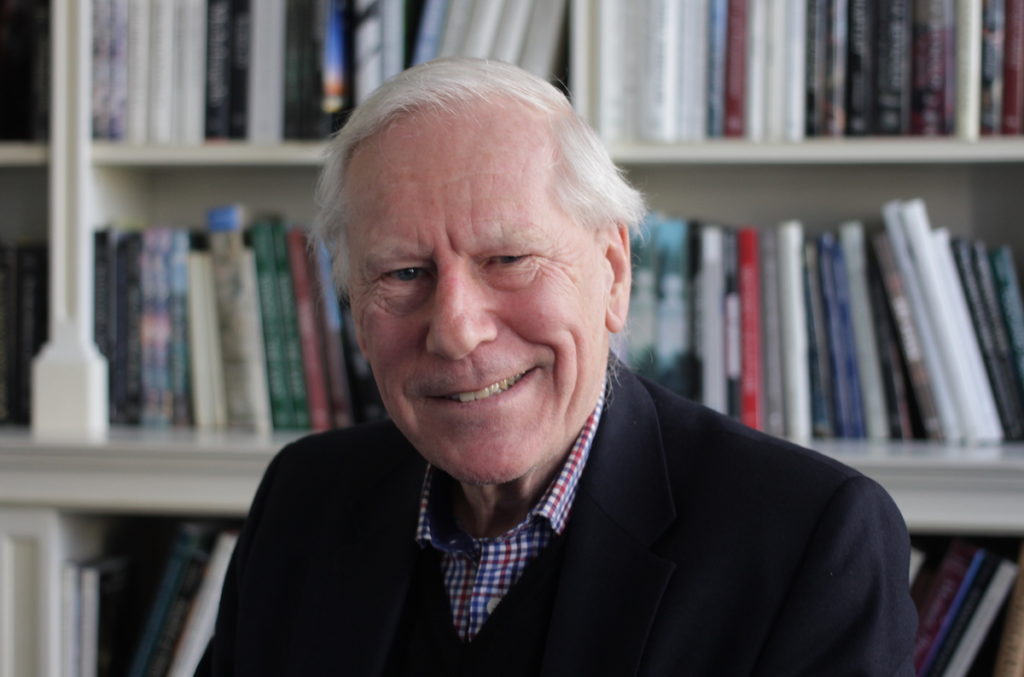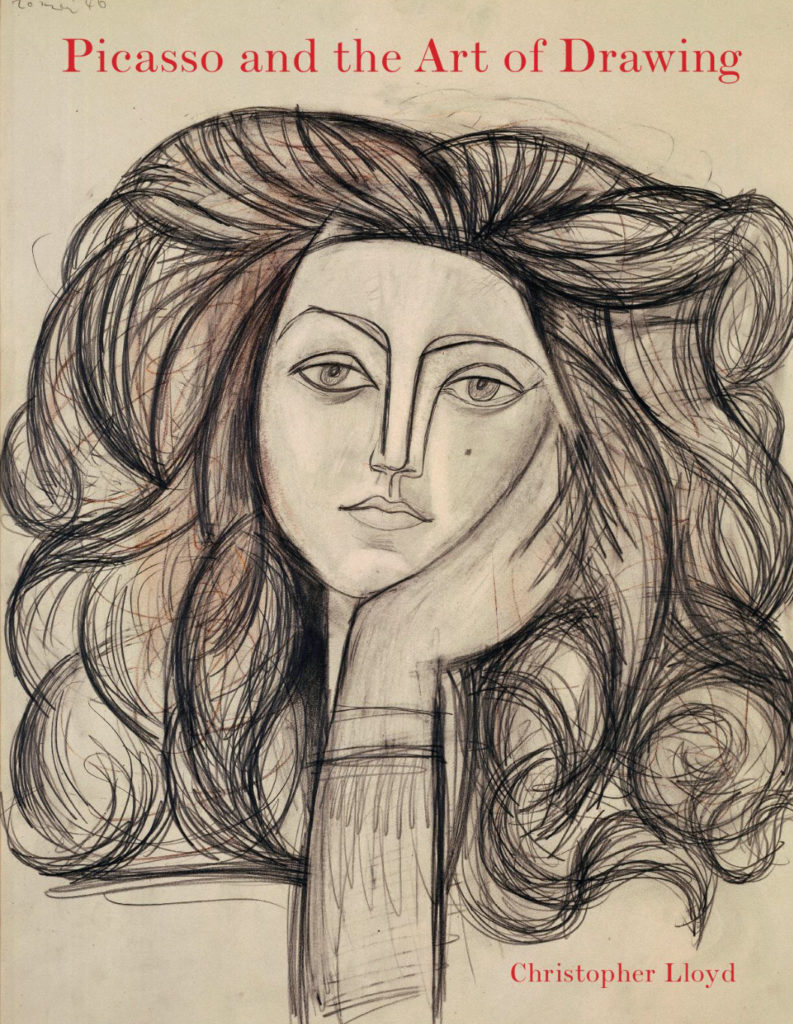In this week’s programme I’m talking to Christopher Lloyd about the crucial role drawing played in the art of Pablo Picasso. What follows is a lightly edited extract from our conversation. Picasso and the Art of Drawing is available now in hardback and distributed by Yale University Press for Modern Art Press.
Christopher Lloyd
Line is the basis of Picasso, whether it’s painting, sculpture, drawing; everything comes down to line. And what he could do with line, doodling, was what bewitched people. He could do it under the table, blind. He could do it in the ground, in the sand. He could do it with anything, on anything. It’s that multiplicity, that multivalency, about drawing. That’s why it’s so fundamental: the backbone to his art.

Hedgehog & Fox
Christopher Lloyd worked in the Ashmolean Museum in Oxford from 1968 until 1988, when he became Surveyor of the Queen’s Pictures in the British Royal Collection, a post he held till 2005. His publications include books on the drawings of Degas and Cézanne.
Christopher’s new book is a beautifully illustrated exploration of the vital role of drawing in Picasso’s artistic career. In fact, seeing the variety of work represented in the book, ‘drawing’ seems almost too narrow a term for the range of techniques, media and styles that Picasso mastered, transformed, and in some cases invented.
Picasso’s contemporary, the photographer and writer Brassaï said, ‘If I had a choice among all the work he has done, I would take the drawings without hesitation… It’s there, I think, that his genius appears most directly.’
And Christopher writes on his opening page: ‘Rare indeed are those artists whose drawings are of more than a passing significance in any estimation of their contribution to the history of art, but the name of Pablo Picasso is assuredly among them.’
So I asked, when it comes to his drawings, is Picasso up there with the greats?
Christopher Lloyd
I do put him up there with the greats. I think the oeuvre –we’re talking about roughly 19,000 drawings and about 174 sketchbooks altogether – is a huge outpouring. I think that the totality of that is equal to Leonardo, Dürer, Rembrandt, Rubens. I believe that implicitly and I think he sees himself as their successor. The humanity in his drawings, the emotional overlay in it all, is quite equal to those very great artists.
H&F
Picasso once asserted that he had never done children’s drawings: ‘never’, he claimed, ‘even when I was very small’. Was this an example of Picasso’s mythmaking or had he really sprung forth fully formed as an artist?
CL
 He didn’t start off a prodigy, although the family projected a myth after he was established that he was some kind of prodigy. We can see from the multitude of early drawings, that he went through all the stages of academic training, beginning at Malaga and then in Corunna, and then in Barcelona. He becomes more liberated when he goes to France. But he went through the academic system.
He didn’t start off a prodigy, although the family projected a myth after he was established that he was some kind of prodigy. We can see from the multitude of early drawings, that he went through all the stages of academic training, beginning at Malaga and then in Corunna, and then in Barcelona. He becomes more liberated when he goes to France. But he went through the academic system.
One of the most interesting aspects of his early draftsmanship is his ability to come to terms very quickly with that academic tradition. He didn’t bypass it. He actually took it on board very rapidly, became very proficient and skilful in it. But at the same time he saw it as a way to escape. He benefited from academic discipline but in a way to invert it and to move it on in his own way. So he in a way was using it like a trapeze artist; it was something that he could bounce off, but he always respected it. That’s the most important thing.
He insisted on the importance of drawing as a discipline and that’s why he actually continued to draw throughout his life. But the early drawings are very, very good. There is some juvenilia, but the drawings themselves are extraordinarily convincing exercises in how to draw the nude, for example. But it’s very quickly apparent on the page, there are doodles which are caricatural, so you can see how he’s blending the two.
He’s seeing the importance of learning how to draw properly but then going on to find ways out of it, to move tradition along. And fortunately in the academic system at the time there was a lot of discussion about whether this was the right way to draw; it had had been all right for the seventeenth century and the eighteenth. Indeed for most of the nineteenth century, but by the end of that century, reforms were necessary. And Picasso comes on board at that very moment when the reforms are beginning to sweep through the academic system. He was incredibly good at that academic drawing and it is the backbone of his work.
H&F
And drawing itself as a form was being taken more seriously. Picasso has his first exhibition of drawings in 1919. In previous centuries drawing had simply been subservient to painting and it had mainly been a preparative art, but Picasso comes along at a propitious time for drawing because it’s beginning to be taken more seriously and different media are available which weren’t available to earlier artists. Can you say something about what was available to him to make a drawing and and the status of drawings?
CL
Yes that’s absolutely true. The tradition from the Renaissance onwards was that drawing was a preparatory exercise, moving towards a finished painting or sculpture, and the drawings were just stored away in the studio or deposited on the floor or even thrown away. Certain drawings were kept because they were presentation drawings or portrait drawings but on the whole it was a preparatory exercise.
This begins to change in the second half of the nineteenth century, particularly in France with the arrival of Impressionism and it was in France that the academic tradition had had its stranglehold since the seventeenth century. So with the Impressionists beginning to look at life around them, life in flux and in movement, painting became a less convincing way of doing this and drawing comes alongside painting. Painting is not the only way now; drawing can do it as well.
This coincided with not so much emphasis on pencil and accuracy and fine paper but a much more liberal approach to the use of materials and instruments. So the softer media – chalks, charcoals with the brush hogwash gouache, tempera, particularly pastels – became more open for artists to use, more available commercially.
Also, artists weren’t afraid to use different supports: their hands wandered from paper onto cardboard or onto canvas, directly onto canvas and onto tracing paper, so there was a feeling of breaking out, of liberalism in drawing. That is the breakthrough from the 1860s through to the end of the century.
Drawings were more readily exhibited alongside paintings. They were mounted, they were framed, so they looked like paintings, so that you now have an autonomy of drawing. It is not just a separate exercise from painting; they were both equal in status.
And dealers, of course, relish this because the production was much quicker and also there were more saleable in many respects. So everybody was pleased. But when Picasso takes this in Barcelona is where he really breaks out with his drawings because his first exhibition in the cafe the cats arts was a series of portraits and they were literally just pinned to the wall and he did them in what we call mixed media. They were charcoal and chalk, but with watercolour and touches of gouache but they were literally just pinned to the wall, over one hundred of them. Some sold and some didn’t. The exhibition in 1919 was by Paul Rosenberg and was the first major exhibition of Picasso’s drawings. But by then he was well established. After all, Cubism was 1906-8 and that had been a great breakthrough in modern art.
H&F
Can you say something about drawings exploratory role in Picasso’s development of cubism?
CL
It’s a severe intellectual exercise: how do you look at an object in the round? How do you put that down in in two dimensions? Introducing the fourth dimension, time, looking at the back of something as well at the front and the sides, and putting all that down, was an extremely complex matter. If you try to work that out, it’s rather like Einstein, it’s an incredibly complex matter to find the right way. And thus cubism goes through these various phases, ending with my favourite, the papiers collés This is a very decisive moment, because instead of just using chalk and pencil and watercolour and so on, suddenly to come and stick a piece of paper or a ticket or a programme or a menu as part of the composition gave drawing another extra element. It was a prodigiously intellectual moment to think of drawing in this three-dimensional way. And in fact the reason, I think, why cubism lasted such a short time was essentially that it was so difficult to do, to sustain that level of intellectual achievement, that ludic quality of deceiving the eye, of drawing the viewer in to the picture, the complexities of it, without putting them off totally.
Picasso was terrified that his cubist drawings would be rather abstract and would seem to be just for those in the know and not have a wider appeal. He was terrified of that and in fact the reaction against it very much comes in the next decade, the decade of the Ballets Russes from 1917 and into the 20s. Then after that, he goes into what’s called the neoclassical phase, where again you get the pure line coming back. Picasso is very a chameleon, he’s very gymnastic in all of this.
He goes into one style and he comes out. He explores it thoroughly, and solves it more or less, adds it to his armoury and then goes on and does something else. He never wanted to be trapped in one particular style, but helped each style develop new styles in turn. That’s why he is the complete artist in all the disciplines of art.
